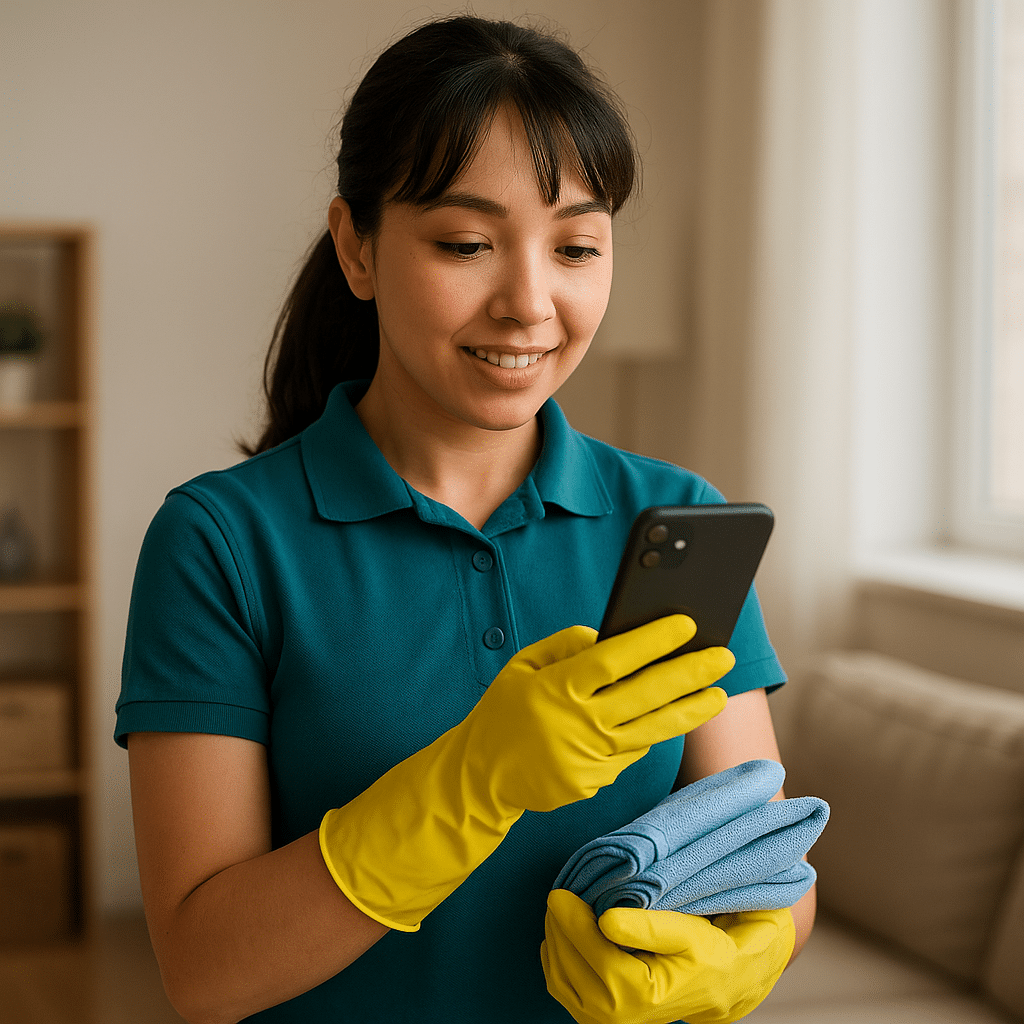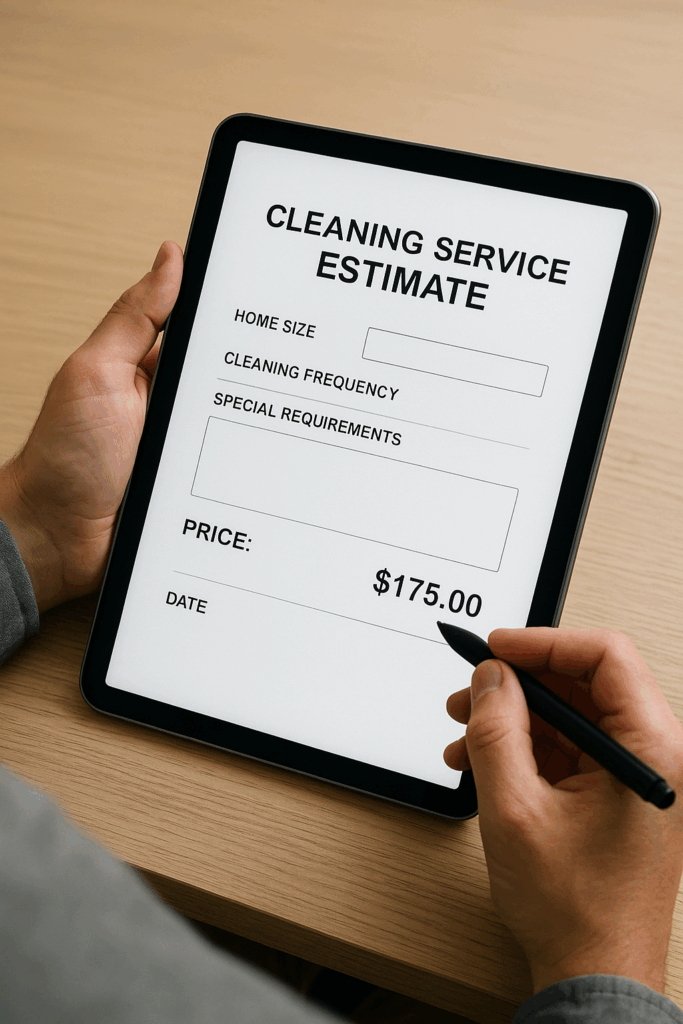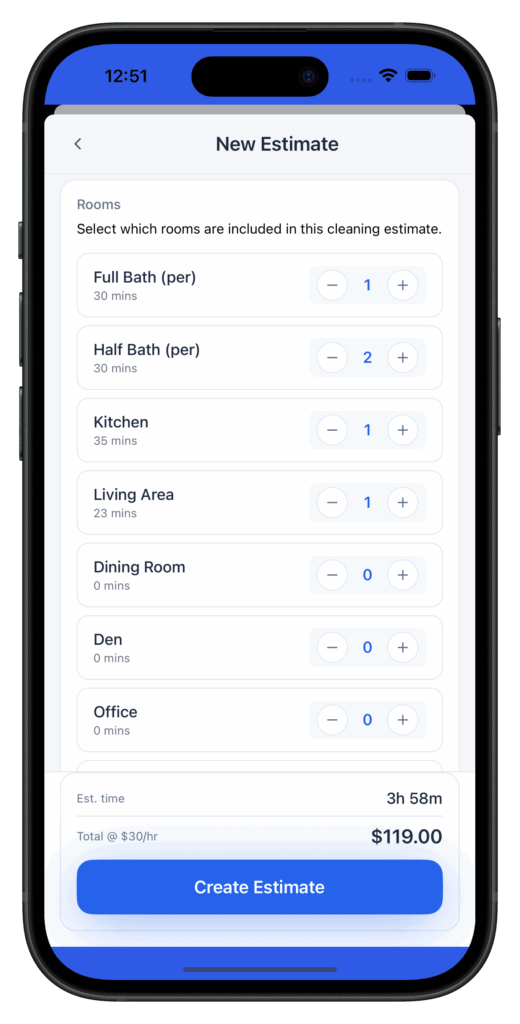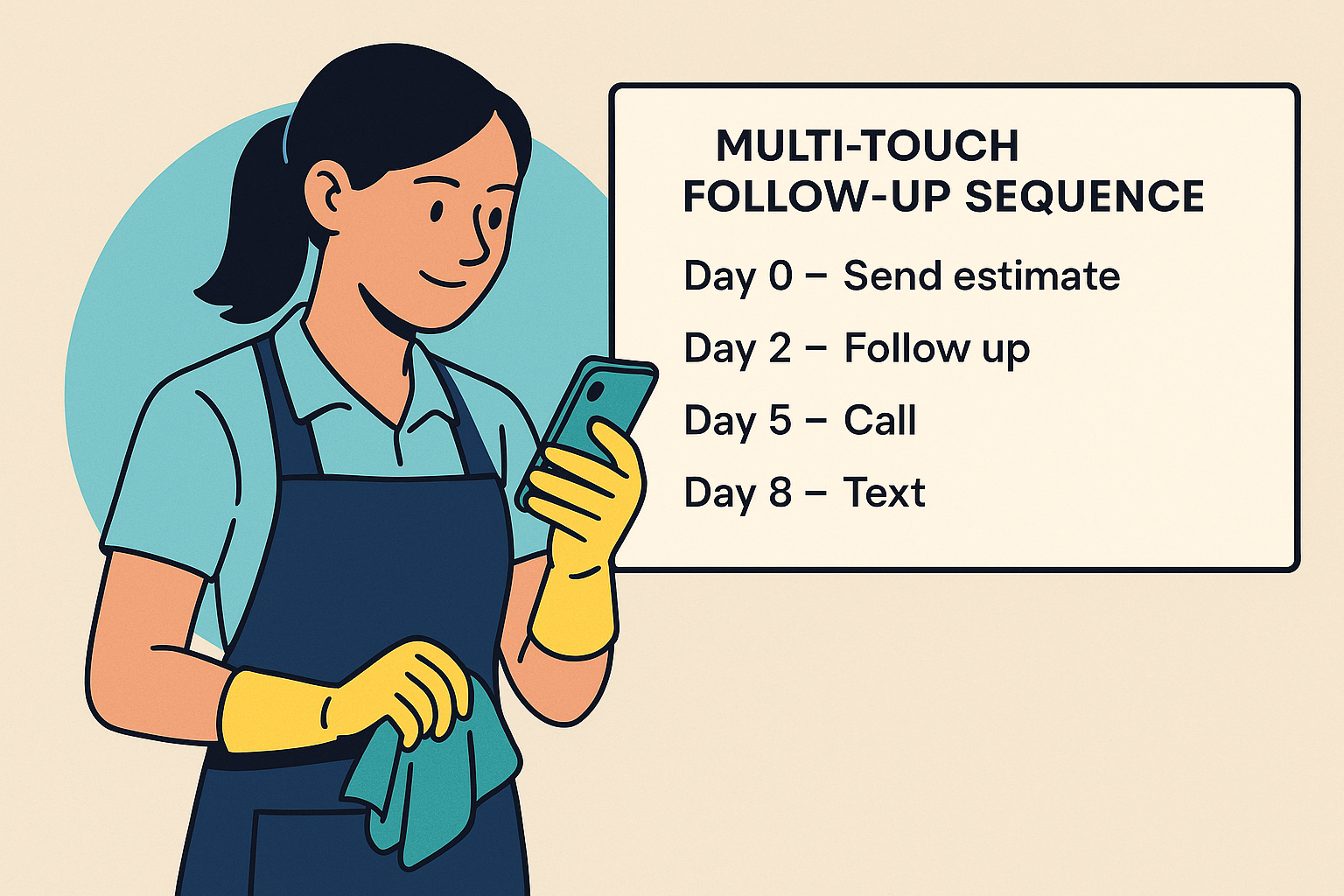Introduction: Why Your Leads Don’t Close
Here’s the truth nobody wants to admit:
Most cleaning business owners don’t have a leads problem. They have a follow-up problem.
It’s not that there aren’t enough people looking for cleaning services. It’s that you’re leaving money on the table because your prospects slip through the cracks after the first contact.
A survey by InsideSales found that 50% of sales happen after the 5th follow-up. Yet 44% of businesses give up after one follow-up attempt.
Think about that. Half the cash you want is sitting with the people you’re not following up with.
If you’re a solo cleaner or a growing cleaning business, you’re probably so busy delivering services that you neglect the pipeline. That’s the problem we’re fixing today.
The Economics of Follow-Up
Most cleaning business owners think the cost of getting new leads is just “the cost of marketing.” But here’s the real cost breakdown:
- Cost of a lead (ad spend, time, networking): $50–$150
- Average value of a recurring cleaning client annually: $1,200–$3,600
- Lost revenue per unconverted lead: $1,200 minimum
The math’s brutal. You’re burning cash if you’re not converting every reasonable prospect.
Here’s a stat to hammer it home:
“Businesses that nurture leads make 50% more sales at 33% lower cost.” — Forrester Research, 2025 Report
It’s not just about closing deals—it’s about not flushing marketing dollars down the drain.
What Makes Cleaning Business Follow-Up Unique
Selling cleaning services is different from selling software or cars. Your prospects often:
- Need fast estimates
- Have questions about trust and safety
- Compare multiple cleaners
- Forget to reply because cleaning isn’t “urgent” in their mind
That’s why your follow-up system needs speed, clarity, and persistence. The prospect must feel like you’re the most professional, organized choice.
Step 1: Respond Within 5 Minutes

Speed wins deals.
According to the Harvard Business Review, businesses that respond to leads within 5 minutes are 21 times more likely to qualify the lead compared to those who wait 30 minutes.
Here’s how you implement it:
Check Your Leads Regularly
Build the habit of reviewing new lead requests multiple times daily so you never miss a message. Staying on top of your pipeline means fewer delays.
Pre-built Templates
Have your response templates ready. Example:
“Hi [Name], thanks for reaching out! I’m running some quick numbers for you now. I’ll send you your custom quote in the next few minutes. Is there anything specific you’d like me to know about your home?”
That script shows you’re on it—and buys you time to prepare an accurate quote.
Step 2: Send a Fast, Precise Estimate

A generic ballpark price isn’t enough anymore.
Prospects want to know:
- How much it costs
- What’s included
- When you can start
Build a quote system that accounts for:
- Home size
- Cleaning frequency
- Special requirements
A custom quote beats your competitor’s “$100–$300 depending on size” guesswork.
According to a 2024 BrightLocal survey, 84% of service customers say a fast, clear quote heavily influences who they hire.
Step 3: Multi-Touch Follow-Up Sequence
Here’s the follow-up sequence I’d run if I owned your cleaning business:
Day 0 (Same Day)
- Send the estimate
- Confirm they received it
- Ask if they have questions
Day 2
Text or email:
“Hi [Name], just checking in to see if you’ve had a chance to look over your quote. Any questions I can answer?”
Day 5
Call:
“Hey [Name], it’s [Your Name] from [Your Cleaning Company]. Wanted to check if you’re ready to get your cleaning on the schedule. I’ve got openings next week!”
Day 8
Text:
“Hi [Name], I’m holding your spot for one more day before it goes back on my calendar. Let me know if you’d like to confirm.”
Day 14
Final follow-up:
“Hi [Name], totally understand if now’s not the right time. I’ll close your file for now. Let me know if you’d like me to keep you on the schedule!”
A polite “I’ll close your file” often triggers a reply because nobody likes doors closing on them.
Step 4: Personalize Every Touch
Alex Hormozi Rule #1: Don’t treat prospects like ATMs. Treat them like people.
Your follow-up should:
- Use their name every time
- Reference details they shared (pets, kids, preferred cleaning days)
- Remind them how your service solves their problem
Example:
“Hi Sarah, since you mentioned your son has allergies, I’ll make sure we use hypoallergenic products for your deep clean.”
That tiny detail can close the sale. People pay for personalized service.
Step 5: Follow Up with the Ones Who Said “No”

Here’s the cash most cleaners leave on the table:
Old leads who said “not right now.”
The circumstances that caused them to say “no” might have changed:
- They got a raise
- They’re sick of cleaning
- The other company disappointed them
Every quarter, export your “cold leads” list and run this message:
“Hi [Name], it’s [Your Name] from [Business]. Just checking in to see if your cleaning needs have changed. I’ve got some new availability if you’re still looking for help around the house.”
If you do this consistently, you’ll unlock thousands in “hidden pipeline” revenue.
The Cost of Not Following Up
I’ll leave you with one last piece of math.
If you’re closing 30% of leads now, and a follow-up system pushes you to 50%, here’s the impact:
- Leads: 20/month
- Current conversions (30%): 6 clients
- New conversions (50%): 10 clients
- Average yearly value/client: $2,000
- Annual revenue difference: $8,000/month x 12 = $96,000/year
A follow-up system isn’t a cost. It’s the cheapest revenue increase you’ll ever see.
Conclusion: Follow-Up is the Game
Everybody wants some secret marketing hack.
But in the real world, the winners are the ones who follow up relentlessly, systematically, and personally.
Don’t waste your ad dollars. Don’t let prospects slip away. Build your follow-up machine and make sure it runs every time.
Remember:
“The fortune is in the follow-up.” – Alex Hormozi
If you’re not following up, you’re not in business. You’re just hoping.



